How Hot Do Hot Tubs Get and Why It Matters

How hot do hot tubs get is a common question. After all, nobody wants to step into a lukewarm puddle or accidentally cook themselves like a lobster! Getting the temperature just right is key to enjoying your hot tub safely and comfortably.
In this article, we’ll talk about hot tub temperatures. We’ll explore how hot these bubbly oases can get, why the right heat matters, and how to find that perfect warmth for your soak. Whether you’re a walk-in tub newbie or a seasoned soaker, understanding the ins and outs of hot tub heat will help you make the most of your watery retreat.
Hot Tub Temperatures
Hot tubs heated in a specific temperature range are designed to provide a comfortable and therapeutic experience. The heating element in a hot tub works to maintain the water temperature, which can vary based on user preferences and weather conditions.
Most hot tubs have a maximum temperature setting of around 104 degrees Fahrenheit (40 degrees Celsius), which is considered safe for most healthy adults. However, the average comfortable range for hot tub use is typically between 100 to 102 degrees Fahrenheit (38 to 39 degrees Celsius). Hot tub thermostats regulates these water temperatures to ensure they remain within the desired range.
The Ideal Hot Tub Temperature
Finding the perfect hot tub water temperature is key to maximizing your enjoyment and safety. The ideal hot tub temperature can vary depending on the user’s age, health condition, and personal preference.
For most adults, a hot tub temperature of 100 to 102 degrees Fahrenheit is ideal. This range is warm enough to provide relaxation and muscle relief without posing significant health risks. However, it’s essential to note that even within this range, personal comfort can vary, and some users may prefer slightly lower or higher temperatures.
The Consumer Product Safety Commission (CPSC) recommends that hot tub owners keep the water temperature at or below 104 degrees Fahrenheit to prevent overheating and heat stroke. Children, the elderly, and those with certain medical conditions may require lower temperatures to ensure safety and comfort.
ALSO READ: How Long Do Hot Tubs Last?
Why Hot Tub Temperatures Matter
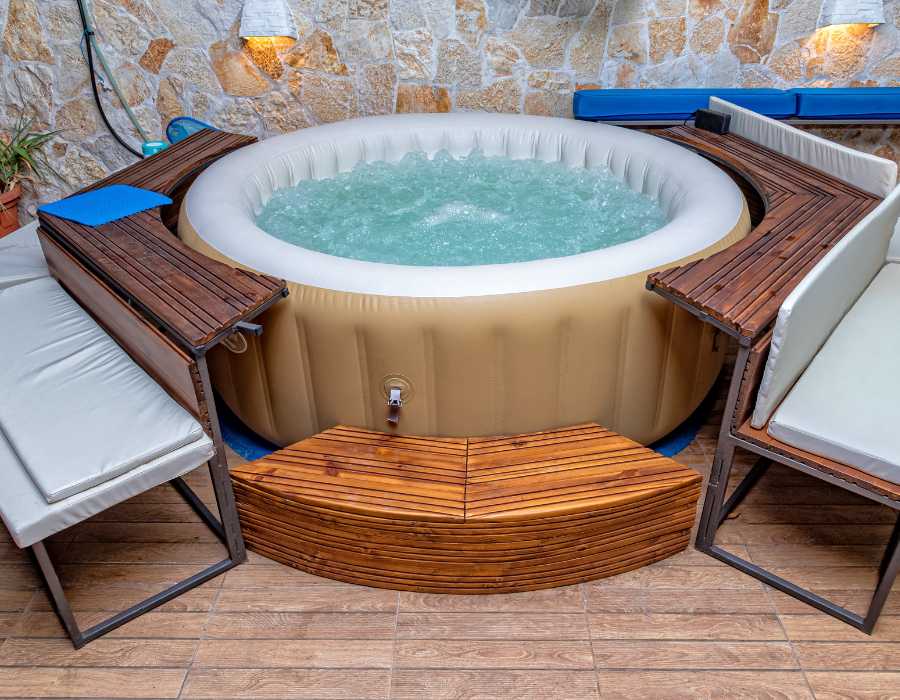
The temperature of your hot tub water has a significant impact on your overall hot tub experience and health. Soaking in water that is too hot can raise human body temperature to unsafe levels, potentially leading to heat stroke or other heat-related illnesses. Conversely, water that is too cool may not provide the therapeutic benefits associated with hot tub use.
Maintaining the right hot tub temperature is crucial for several reasons:
Health Benefits
Soaking in a hot tub at the right temperature can help relax muscles, improve blood flow, and reduce stress. Warm water immersion is known to provide relief from aches and pains, making it an excellent option for those with arthritis or muscle soreness.
Safety
Proper temperature regulation helps prevent overheating, which can lead to serious health issues like heat stroke. It also reduces the risk of fainting or dizziness caused by sudden changes in body temperature.
Comfort
The right water temperature enhances the overall hot tub experience, making it more enjoyable and relaxing for users.
Factors Influencing Hot Tub Temperatures
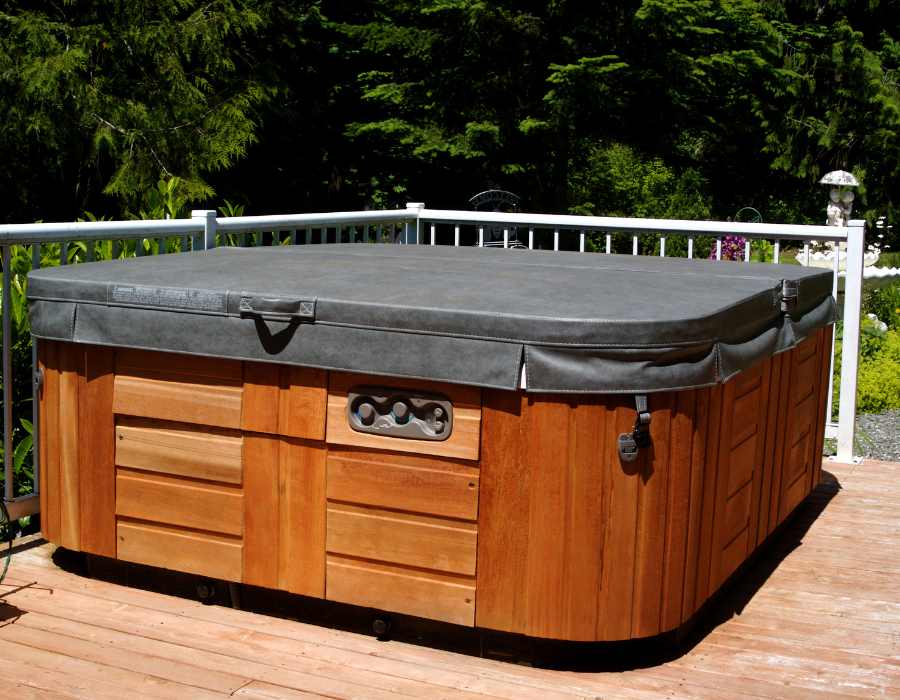
Several factors can influence the temperature of your hot tub, and understanding these can help you maintain the ideal setting:
Personal Preferences
Individual comfort levels vary, and some people may prefer their hot tub water to be a few degrees warmer or cooler than the recommended range.
Weather Conditions
Outdoor temperatures can affect your hot tub’s water temperature. In colder weather, you may need to set the temperature slightly higher to maintain comfort, while in warmer climates, a lower setting might be sufficient.
Spa Manufacturers and Heating Elements
Different hot tub models come with varying capabilities in terms of heating and maintaining water temperature. Modern hot walk in tubs often have advanced heating elements and thermostats that provide precise temperature control.
Safety Considerations for Hot Tub Use

Safety is paramount when using a hot tub, and understanding the correct water temperature plays a significant role in ensuring a safe experience. Here are some essential safety tips for hot tub owners:
Follow Safety Rules
Always adhere to the safety guidelines provided by the Consumer Product Safety Commission and your hot tub manufacturer. This includes keeping the water temperature at or below 104 degrees Fahrenheit.
Use an Accurate Thermometer
Regularly check your hot tub’s water temperature with an accurate thermometer to ensure it remains within the safe range.
Avoid Overheating
Keep your hot tub sessions brief, ideally between 15 to 20 minutes, particularly when the water is close to its highest temperature setting. Overheating can lead to heat stroke or other serious health issues.
Stay Hydrated
Drink plenty of water before and after using the hot tub to stay hydrated and help regulate your body’s internal temperature.
Monitor Vulnerable Users
Be extra cautious when children, elderly individuals, or those with medical conditions use the hot tub. They may be more susceptible to overheating and other heat-related health problems.
Special Considerations for Vulnerable Groups
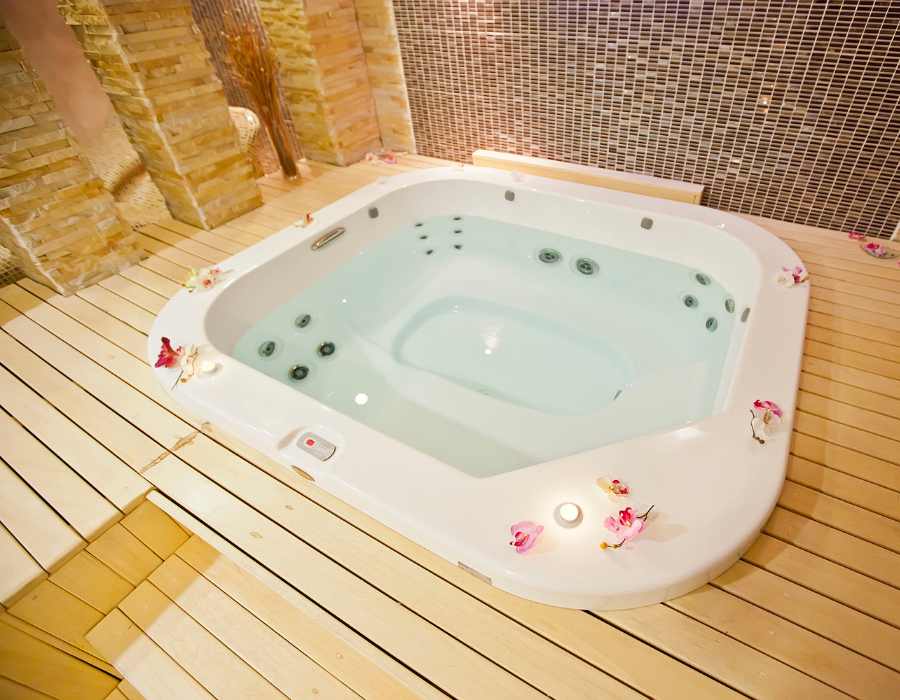
While hot tubs can be enjoyable for most, certain groups need to exercise extra caution when using them:
Pregnant Women
Pregnant women should be especially cautious with hot tub temperatures. High temperatures can pose risks to the fetus, particularly in the first trimester. It is generally recommended that pregnant women avoid hot tubs or limit their use to lower temperatures (below 100 degrees Fahrenheit) and shorter durations.
Individuals with Blood Pressure Problems
People with high or low blood pressure should consult with their doctor before using a hot tub. Hot water can cause blood vessels to dilate, potentially leading to blood pressure fluctuations. This is particularly important for those taking medication for blood pressure management.
Fully Healthy Adults vs. Those with Health Issues
While fully healthy adults can generally enjoy hot tubs safely, those with chronic health issues or who are recovering from illness should be cautious. Conditions such as heart disease, diabetes, or respiratory problems may be exacerbated by prolonged exposure to hot water.
Children and the Elderly
Both children and elderly individuals are more susceptible to the effects of hot water. Children should use hot tubs with adult supervision and at lower temperatures, while the elderly should limit their time in hot tubs to prevent overheating and dehydration.
History and Evolution of Hot Tub Temperatures
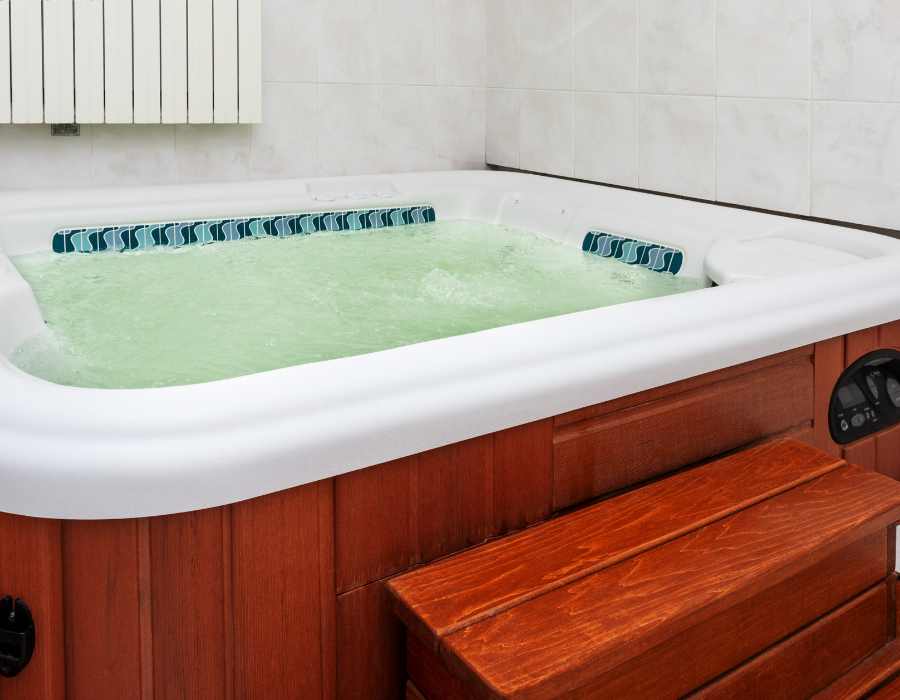
Hot tub use dates back to ancient times when public bath houses were popular for their social and health benefits. Over the centuries, the approach to hot tub temperatures has evolved significantly:
Historical Perspectives
In ancient Rome and Japan, public baths were heated using natural hot springs or manually heated water. These baths were often quite hot, reflecting the lack of precise temperature control technology.
Modern Hot Tubs
Today, modern hot tubs come equipped with advanced heating elements and thermostats, allowing users to set and maintain specific temperatures accurately. This technological advancement has improved the safety and comfort of hot tub use.
Impact on Safety Standards
The evolution of hot tubs has also led to the establishment of safety standards and guidelines. Organizations like the Consumer Product Safety Commission have developed regulations to ensure that hot tub temperatures remain within safe limits to prevent accidents and health issues.
Practical Tips for Hot Tub Owners
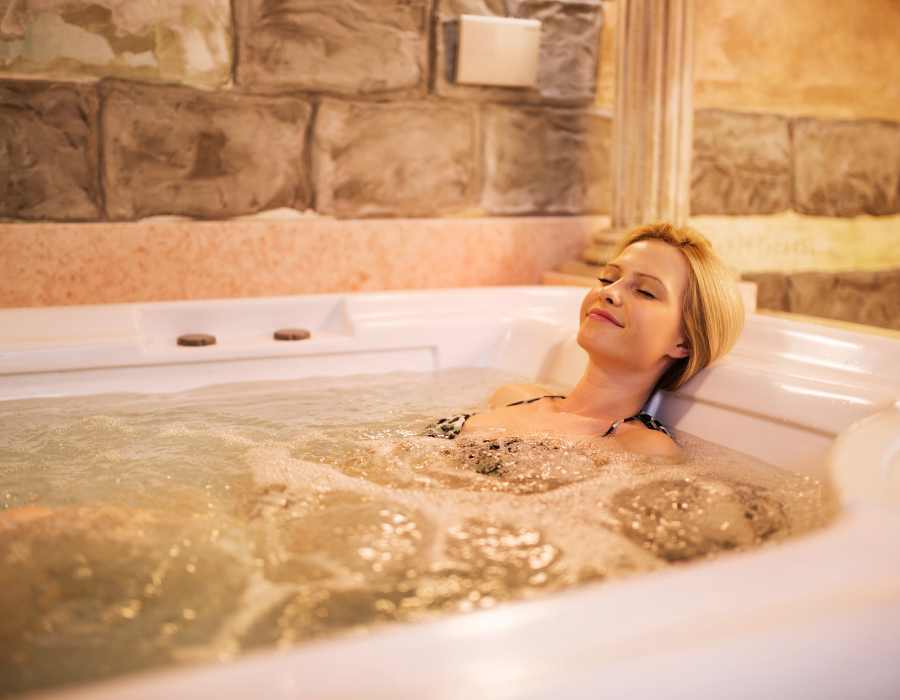
To maximize the enjoyment and safety of your hot tub, consider these practical tips:
Setting and Maintaining the Perfect Temperature
Regularly check and adjust your hot tub’s thermostat to maintain the ideal temperature. An accurate thermometer can help ensure the water stays within the desired range.
Monitoring Water Temperature
Make it a habit to monitor the water temperature before each use, especially if multiple people are using the tub. This helps prevent the water from becoming too hot or too cool.
Ensuring a Safe Experience for the Entire Family
Implement safety measures such as setting time limits for hot tub sessions, particularly for children and elderly family members. Encourage everyone to stay hydrated and avoid excessive drinking while using the hot tub.
Using a Cover
When your hot tub is not in use, ensure it is covered to retain the water temperature and minimize heat loss. Additionally, this practice helps prevent debris from entering the water, promoting better hygiene.
Regular Maintenance
Regularly clean and maintain your hot tub to ensure the heating elements and thermostats are functioning correctly. This includes checking for any signs of wear and tear and addressing them promptly.
ALSO READ: How Much Do Hot Tubs Cost [2024 Price Guide]
How to Choose the Right Hot Tub Temperature for Different Activities
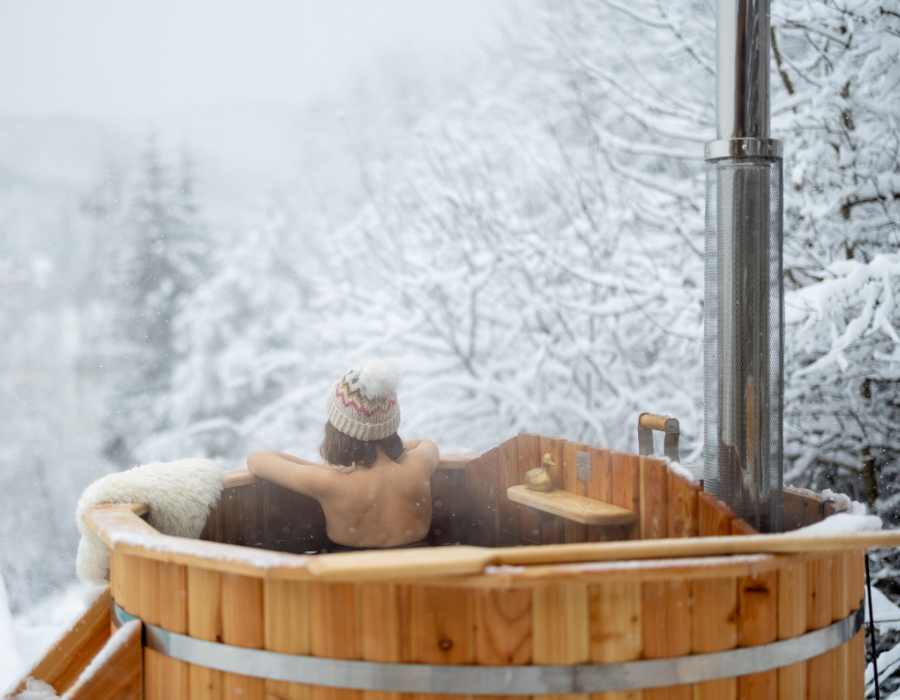
Relaxation and Socializing
Most hot tub owners find that a temperature range of 100 to 102 degrees Fahrenheit provides a perfect balance. This range is warm enough to soothe muscles without causing discomfort or health risks.
- Comfortable Temperature: A safe hot tub temperature in this range helps in relaxing the body while preventing overheating. Healthy adults can enjoy long sessions at these temperatures without worrying about heat strokes.
- Social Gatherings: When hosting a social gathering, it’s important to ensure that the water temperature remains consistent and comfortable for all guests. Avoid setting the temperature too high to accommodate a diverse group of users.
Therapeutic Use
For therapeutic purposes, such as alleviating muscle pain or arthritis symptoms, a slightly higher temperature might be beneficial. However, it is crucial not to exceed the recommended hot tub temperatures max.
- Safe Hot Tub Temperature: For therapeutic soaking, temperatures between 102 and 104 degrees Fahrenheit are often recommended. This range can help increase blood flow and reduce muscle tension, providing maximum benefit without the risks associated with extremely hot water.
- Monitoring and Regulation: Use an accurate thermometer to regularly check and regulate water temperatures. This ensures that the spa temperature remains within safe limits, especially during prolonged therapeutic sessions.
Exercise and Aquatic Therapy
Some hot tub owners use their tubs for light exercise or aquatic therapy. For these activities, a slightly lower temperature might be more suitable.
- Lower Temperature: Setting the hot tub to a lower temperature, around 95 to 100 degrees Fahrenheit, can be more comfortable for physical activities. This prevents the body from overheating during exercise.
- Hydration: Ensure to stay hydrated and take breaks as needed. The lower temperature supports a safer environment for movement and exercise without causing excessive heat build-up.
Special Considerations for Specific Groups
Pregnant women, children, and individuals with health issues require special attention to the best hot tubs and hot tub temperatures.
- Pregnant Women Beware: Pregnant women should use hot tubs cautiously, keeping the temperature below 100 degrees Fahrenheit to avoid risks to the fetus. Shorter sessions are also advised.
- Children and Elderly: Both children and elderly individuals have different body temperature regulation capabilities. Lower temperatures and shorter durations are recommended for these groups to ensure safety.
- Individuals with Health Conditions: People with conditions like heart disease or blood pressure problems should seek advice from their healthcare provider before using a hot tub. Maintaining lower temperatures can help prevent complications.
Safety Tips for a Hot Tub Owner
- Follow Safety Rules: Adhering to safety rules set by spa manufacturers and the Consumer Products Safety Commission is crucial. This includes keeping the water temperature within safe ranges and monitoring it regularly.
- Avoid Alcohol: Alcoholic beverages should be avoided while using hot tubs, as they can impair judgment and increase the risk of heat-related issues, including alcohol-related drownings.
- Use Accurate Thermometers: Always use reliable thermometers to ensure the hot tub temperature is accurately maintained. This helps in preventing both overheating and excessively low temperatures.
Final Remarks
Understanding and maintaining the correct hot tub temperatures is essential for ensuring a safe and enjoyable experience. By following the guidelines and safety tips outlined in this blog, hot tub owners can provide a comfortable environment for themselves and their loved ones.
Whether you’re looking to relax, relieve muscle pain, or enjoy social time with friends, the right hot tub temperature makes all the difference. Monitor and adjust the water temperature regularly, stay hydrated, and always prioritize safety to make the most of your hot tub experience.
Transform your bathroom experience with Fairhope Walk-in Showers and Tubs! Our expertly designed, safe, and luxurious walk-in showers and tubs are perfect for enhancing both comfort and accessibility.
Contact us today to schedule a consultation and discover how we can make your bathroom a relaxing oasis!